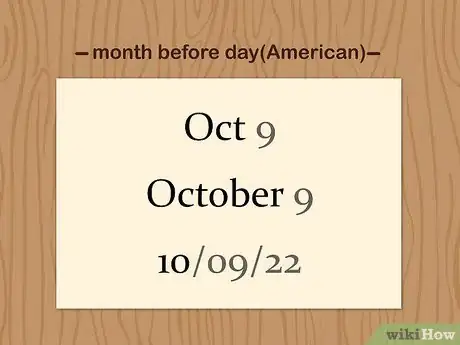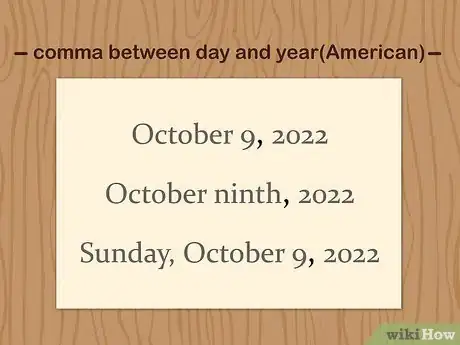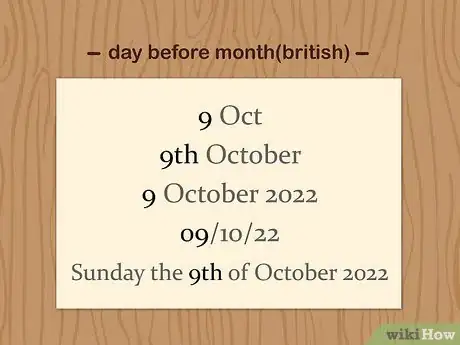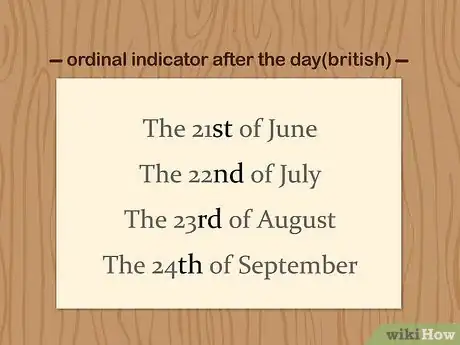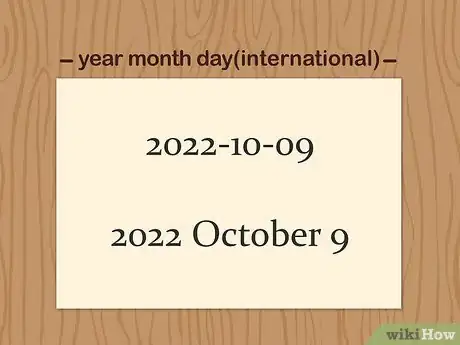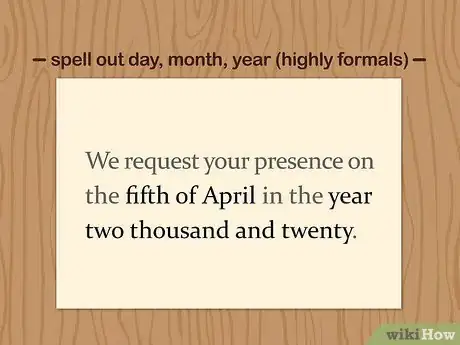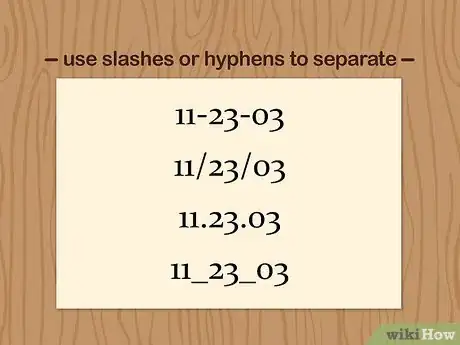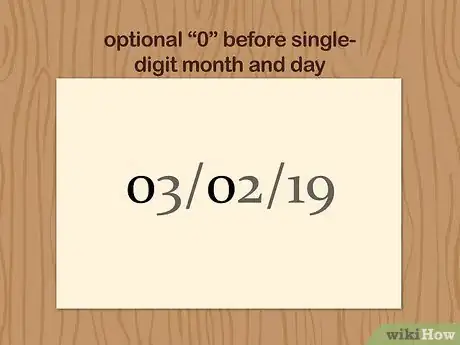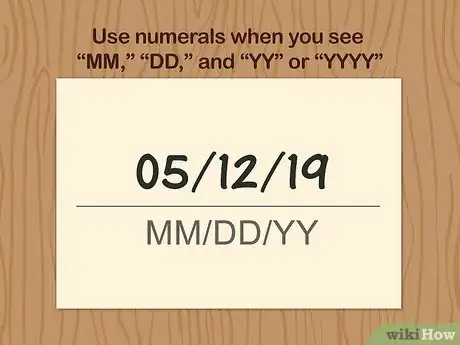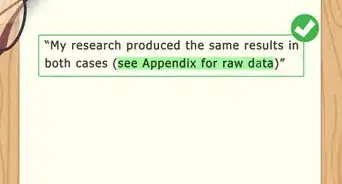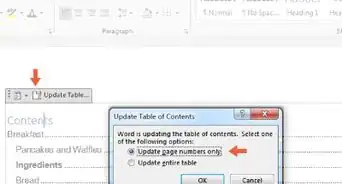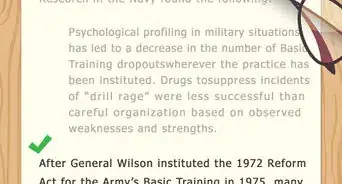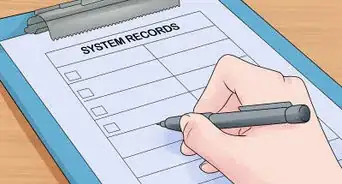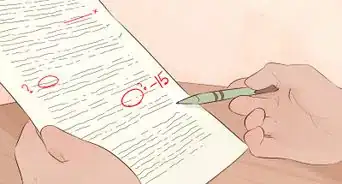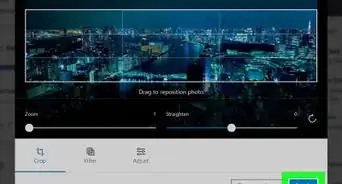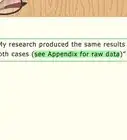This article was co-authored by wikiHow Staff. Our trained team of editors and researchers validate articles for accuracy and comprehensiveness. wikiHow's Content Management Team carefully monitors the work from our editorial staff to ensure that each article is backed by trusted research and meets our high quality standards.
This article has been viewed 409,746 times.
Learn more...
Writing out the date can seem simple and oddly complicated at the same time. You only have a few pieces of information to convey, but there’s no one way to write the date. Instead, there are a handful of formatting varieties for different occasions, dialects, and purposes. When choosing a date format, use the one that will provide the most clarity to your audience. If you’re entering dates into a form, stick with a numerical format that can’t be confused. If you’re writing to an international recipient, consider spelling out the month or following the International Standard. In terms of formality, you can show respect on a formal document by writing out the entire date, but feel free to keep the date on an informal letter short and sweet.
Steps
Following Dialectical Standards
-
1List the month before the day in American English. This format, used in the United States and other countries that follow American English conventions, is based on the order typically used in conversation. To use it, write out the month, followed by the day, followed by the year. This may look like the following examples:
- Oct 9
- October 9
- 10/09/22
-
2Place a comma between the day and year in American English sentences. In American English, the year is preceded by a comma. Use this comma whether you’re spelling out the day or using the numeral. Include a comma after the weekday as well if you’re including it. The previous example would be written out as:
- October 9, 2022
- October ninth, 2022
- Sunday, October 9, 2022
- Placing a comma between the month and year in British English is optional.
Advertisement -
3Order the day before the month in British English. This system is used in the United Kingdom, Australia, and many countries around the world. To follow it, order the data points from narrowest to broadest, with the narrowest detail (the day) preceding the next broader category (the month), and ending with the broadest category (the year). Depending on the level of formality you’re using, you could write the date in any of the following variations:
- 9 Oct
- 9th October
- 9 October 2022
- 09/10/22
- Sunday the 9th of October 2022
-
4Include “the” and “of” when spelling out dates in British English. If you are writing out the date in sentence format, place “the” before the day and “of” before the month. It’s important to use both together, and not just one or the other. Correct possibilities include:
- The 9th of October
- Sunday the ninth of October
-
5Insert an ordinal indicator after the day in British English sentences. If you’re using numerals instead of spelling out the day, add a 2-letter ordinal indicator after the last numeral. Choose one of the 4 ordinal indicators (-st, -nd, -rd, -th) that corresponds with the suffix of the spelled-out word (eg. first and 1st, second and 2nd). For example, you could write the following:
- The 21st of June
- The 22nd of July
- The 23rd of August
- The 24th of September
- Note that numerals in the teens are followed by -th. So you’d write 11th, 12th, and 13th instead of 21st, 22nd, and 23rd.
- This tactic is less commonly used in American English but is still accepted.
-
6Identify the year first when using the International Standard. To avoid confusion across British and American English, use the International Standard. This system filters the information from the broadest category to the narrowest detail. Place the year before the month and conclude with the day.
- The same date, which would be 10/09/22 in American English but 09/10/22 in British English becomes 2022-10-09 in the International Standard.
- You could also write this date out as 2022 October 9. Don’t use commas between any of the data points.
- Always include the full 4-digit year when using this format.
Using Different Levels of Formality and Scope
-
1Spell out the day, month, and year for highly formal invitations. Even if you follow American English conventions, include the day first when you spell out each piece of information. Use this format only for the most formal documents, such as a wedding invitation or a formal certificate such as a diploma.[1]
- For an invitation, try “We request your presence on the fifth of April in the year two thousand and twenty.”
- Use this format to express courtesy and deference to the reader and the occasion.
-
2Spell out only the month within formal and semi-formal contexts. For a less-formal invitation, announcement, or piece of correspondence, it is acceptable to include numerals for the day and year along with the spelled-out version of the month. This is also common in many academic style manuals.[2]
- When identifying an event or occasion, write “on” before a day. If you omit the day, insert “in” before the month or year.
- In British English, you could write “she was born on 8 May 1883” or “she was born on the 8th of May 1883.”
- In American English, try “she was born on May 8, 1883” or “she was born in May 1883.”
-
3Choose numerals when dating documents and records. Write the date out in numerals at the top of a memo, a page of lecture notes, an impersonal business record such as an invoice, or piece of correspondence to indicate when the record was created or when something is due.[3] Use all numerals when prompted by a form or in following record-keeping conventions. Try using numerical dates in a spreadsheet or filename as well to streamline your data.
- You can include the date in MM/DD/YY format at the top of a greeting card so your recipient knows when it was written.
- A museum database may use the YYYY-MM-DD format to identify when an object was acquired.
- You may be asked to provide your date of birth in MM-DD-YYYY format on a government form.
Formatting Numerical Dates
-
1Separate the month, day, and year with slashes or hyphens. Use either hyphens or forward slashes to conform with the most common methods for separating numerals. Choose periods or bullets for a more stylized version. If none of these options are available for including a date in a filename, try underscores instead. The twenty-third of November could be written out in any of the following formats in American English:
- 11-23-03
- 11/23/03
- 11.23.03
- 11_23_03
- Stick with hyphens for the International Standard. The same date would be written as 2003-23-11 in this format.[4]
-
2Include an optional “0” before single-digit month and day numbers. When writing dates numerically, add a “0” before January through September and the first through the ninth day of the month. This is often required in forms but you can use it to make your own list of dates visually neater. It will make all of your numerical dates the same length and will allow for correct data sorting.
- For instance, you could use either 3/2/15 or 03/02/15.
- In a list of dates, 03/02/15 would be the same length as 12/02/15.
- If you use 3/2/15 in your list, the earlier date may incorrectly be sorted after the later date. This happens because the first digit in the March date (3) is larger than the first digit in the December date (1). Add a “0” to prevent this error.
-
3Use numerals when you see “MM,” “DD,” and “YY” or “YYYY” on a form. When you’re asked to provide a date on a form, you’ll often see something like MM/DD/YY or DD-MM-YYYY. These letters indicate how many numerals you should include and in what order. “MM” stands for a 2-digit month and “DD” suggests a 2-digit day. “YY” indicates you should include the last 2 digits of the year, while “YYYY” means you must include all 4 digits.[5]
- Use a “0” before single-digit days and months as needed.
- If you’re asked to provide the date as MM/DD/YY you could write 05/12/94.
- If you’re asked for DD-MM-YYYY, this date would be 12-05-1994.
- You may see these letters without any separation on some forms. For DDMMYY, simply enter 120594 unless otherwise noted.
References
- ↑ https://www.englishclub.com/vocabulary/time-date.htm
- ↑ http://entomology.ifas.ufl.edu/frank/KISS/kiss16.htm
- ↑ https://dictionary.cambridge.org/us/grammar/british-grammar/writing/dates
- ↑ https://grammar.yourdictionary.com/style-and-usage/how-to-formally-write-the-date.html
- ↑ https://grammar.yourdictionary.com/style-and-usage/how-to-formally-write-the-date.html
About This Article
To write dates informally, you can use numerals and dashes or backslashes between the day, month, and year to keep the dates short. For single digit days and months, you can choose to write the single digit or use a zero in front of the digit. Write out the month as a word instead of using the numeral in slightly more formal situations. In formal situations, like when you're writing invitations or letters, you can use words instead of numerals for the entire date. For tips on using the correct sequence when writing dates, read on!
